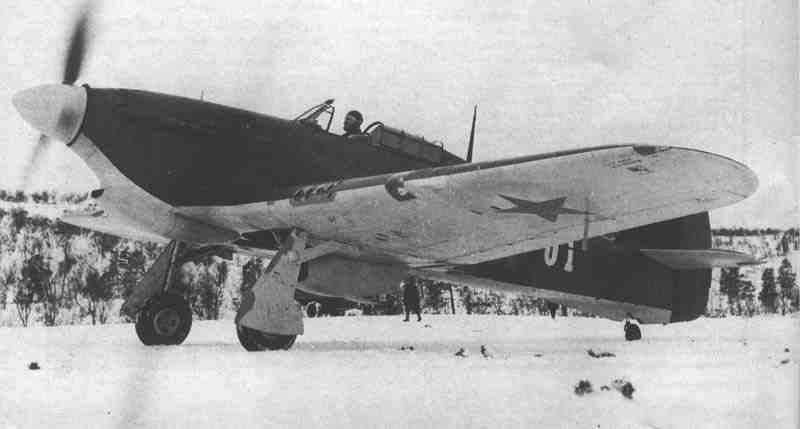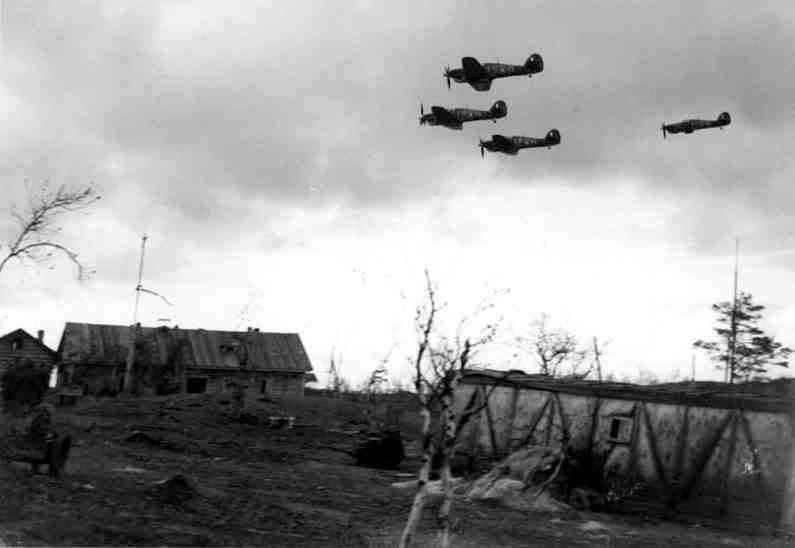 |  |
Hurricane Mark IIBs of No. 151 Wing RAF, known as ‘Force Benedict’, were based at Vaenga, near Murmansk, between September and November 1941 to provide defence against German air attacks on Allied convoys unloading at Murmansk
When German forces invaded the Soviet Union in June 1941, Stalin urged Winston Churchill, Britain's wartime leader, to send him Spitfires. Churchill refused, but he dispatched 40 Hurricanes to begin with, with hundreds more later. As trainers and technicians went the men of 151 Wing, made up of two squadrons, Nos 81 and 134. They were officially under the command of Admiral Nikolai Kuznetsov, head of the Soviet Navy and Naval Air Service, and their orders were to undertake 'the defence of the naval base of Murmansk and co-operation with the Soviet Forces in the Murmansk areas'.
The first batch sailed from Liverpool on August 12 in a convoy headed for the port of Archangel, on Russia's White Sea. Aboard the SS Llanstephen Castle were 16 Hurricanes in crates, with all the spares and kit they would need to get them in the air. The flotilla of ships, codenamed Dervish, was the first of the PQ convoys that later become notorious because so many of their ships were sunk by Nazi U-boats on that run through near-freezing seas to northern Russia. The second batch, of 24 Hurricanes and their crews, were put on board HMS Argus, an escort carrier converted from a World War I Italian merchant ship. She sailed from Greenock on August 19. When the Argus reached Murmansk Sound, the Hurricanes were to fly off from its deck and go directly to a remote and windswept airfield at Vaenga, 15 miles north-west of Murmansk on the Kola peninsula that borders Finland.
All 39 were to rendezvous there at a brutally exposed base whose rutted grass strip was open to the bitter winds and snows of the Russian winter. In all, around 550 RAF air and ground crew made this their home for the next four months, a very short time to get their mission completed in temperatures that would go down to -15C, with daylight that varied from 23 hours at the start to three at the end, and rain, mist, snow and ice. Six days after the Llanstephen Castle docked at Archangel on August 30, three Hurricanes took off for flight testing. Nine days after arrival all 15 were flying, to the delight of the pilots and the Russians. They flew up to Murmansk and the first operational patrols began.
151 Wing carried out 365 sorties during its stay at Vaenga, claiming 11 Messerschmitt fighters and three Ju88 bombers shot down, a very creditable tally, considering how short the mission was. On October 13, the handover of the Hurricanes to the Air Force of the Soviet Northern Fleet started. On October 26 the first Luftwaffe aircraft was destroyed by an ex-151 Wing Hurricane flown by a Russian pilot. On November 16, an advance party left for Archangel to sail back to Britain. A fortnight later, Wing Commander Henry Neville Gynes Ramsbottom-Isherwood, who led 151 Wing and Squadron Leaders Rook and AG Miller and Flt Sgt Haw were awarded the Order of Lenin, the only four British servicemen so honoured in the whole of World War II. In the list of Russian honours, the only one higher is the Order of Victory, and only one of those was awarded to a Briton - Viscount Montgomery.